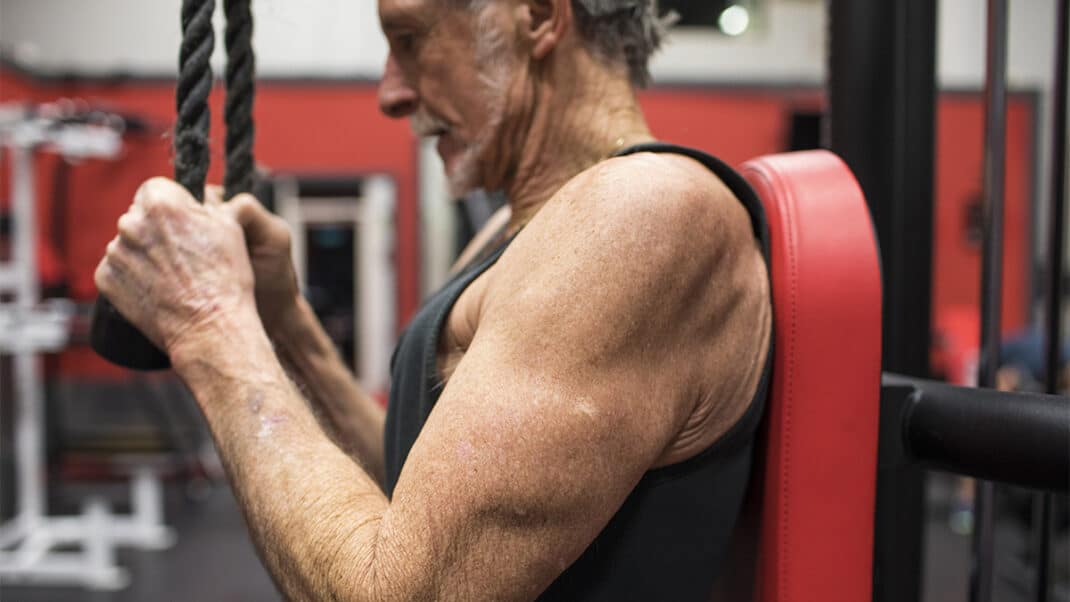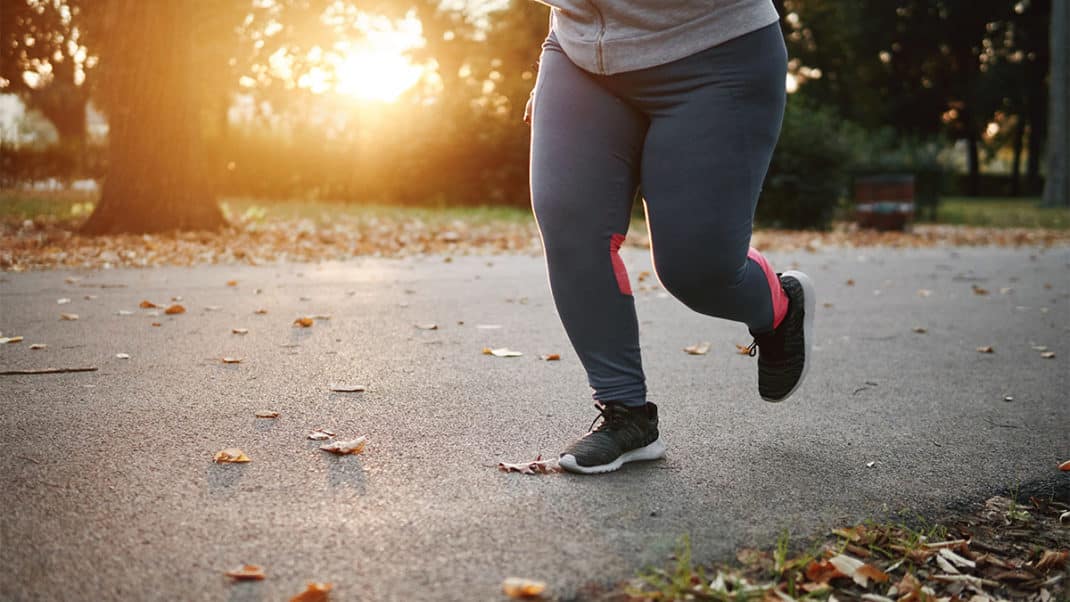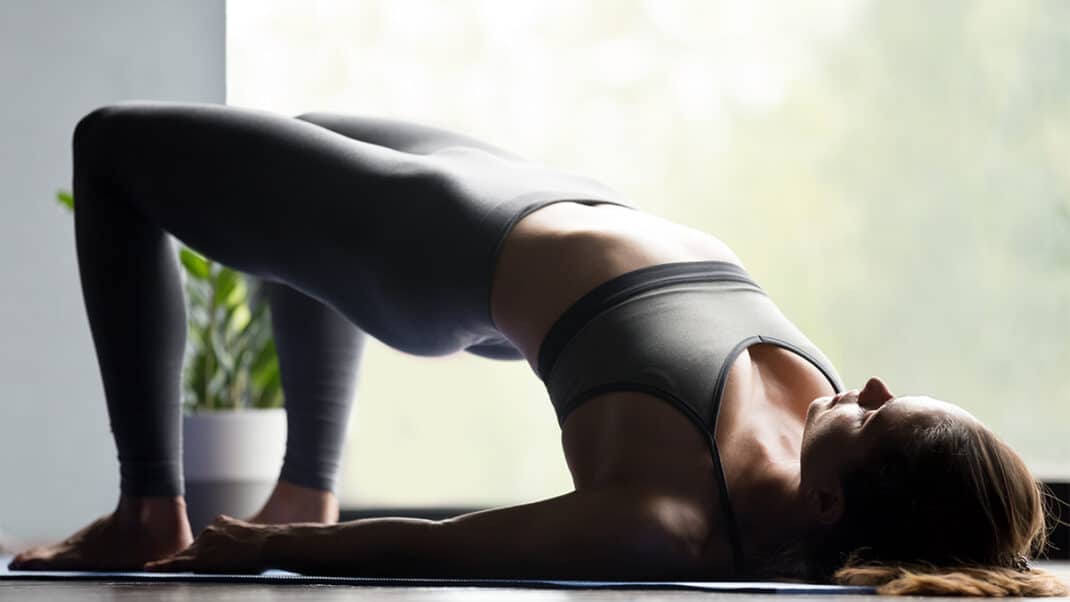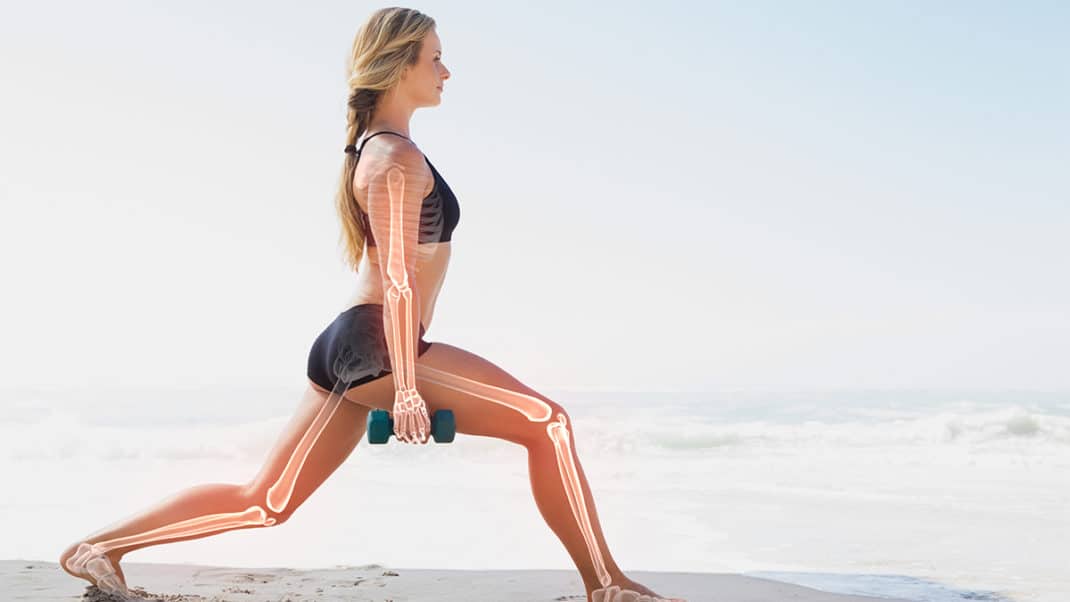R.I.C.E. Versus M.E.A.T.: What Method Is Best for Acute Inflammation?
A review of the research on two conflicting approaches to healing.
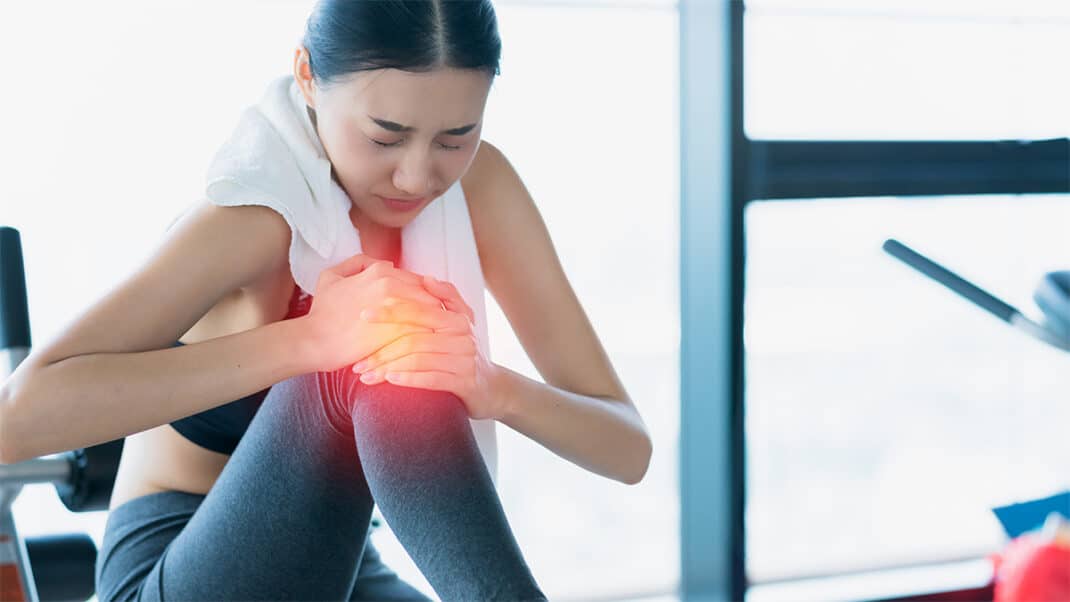
For decades, ice packs and inflammation have gone hand in hand. For example, as part of the practice equipment provided to coaches for New York City’s West Side Soccer League youth athletics program, one will find cones, balls, a ball pump, shinguards, jerseys and instant ice packs. All but the ice packs are needed for playing the sport. However, no one needs to be told what the “shake and break” ice pack is for. All the coaches know that at any practice or game there is a possibility for an ankle to get rolled, a knee tweaked, a head bumped or a shoulder bruised. When it does, you are supposed to apply a cold pack. For the gym goer, cold compresses, ice baths and cryotherapy chambers are other common ways to chill out achy joints and, of course, sore muscles. But recently questions have arisen as to whether that is really the best move when it comes to facilitating the body’s healing process during acute inflammation.
Here’s a look at the use of ice and other aspects of the R.I.C.E. method—and why new research indicates that it may be a better idea to let the body run its course using something called the M.E.A.T. method for acute inflammation.
A Quick Review of the R.I.C.E. Method
For decades, the R.I.C.E. method has been the go-to approach for first aid of acute injuries. R.I.C.E. stands for Rest, Ice, Compression and Elevation, and it describes how to treat the injured area.
- Rest (stop the activity; rest the injured area)
- Ice (apply an ice pack or compress)
- Compression (wrap with an elastic bandage)
- Elevation (raise injured area above heart level)
Implementing R.I.C.E.—and, more specifically, applying ice or cold packs to acute injuries—is done to blunt the inflammatory process and reduce edema (swelling), pain and bleeding.
Minimizing these physiological reactions has historically been considered a good thing. In 2013, Mawhinney et al. suggested that applying ice can limit inflammatory signaling and edema and therefore limit secondary damage to muscle fibers. However, recent research indicates that allowing the inflammatory response to progress naturally may be exactly what the body needs in order to heal.
To understand why some medical and therapeutic professionals have begun to shift away from R.I.C.E., it is important to understand inflammation and its role in the healing process.
Inflammation and the Healing Process
Inflammation is the body’s reaction to any trauma to vascularized tissue (i.e., tissue that contains blood vessels), regardless of the cause of injury. Some causes of damage to vascularized tissue include
- impact injuries (causing bruising)
- mechanical injuries (e.g., strains and sprains)
- chemicals (absorbed topically or ingested)
- microbes (e.g., bacteria and viruses)
- radiation (e.g., sunburn)
For each of these types of traumas, there is a very similar series of events that takes place, beginning immediately after the damage occurs. Citing the similar responses to stressors is what helped Hans Selye formulate the concept of the General Adaptation Syndrome. There is an initial alarm phase, and regardless of the means of damage, the body responds in comparable ways to meet that stress. These physiological responses—seen in most all acute injuries—are the result of the inflammatory process (Jackson 2014).
See also: Inflammation: Obesity, Diabetes, Aging and Exercise
Symptoms of Inflammation
There are five general symptoms of inflammation that happen in the injured area when acute injuries occur:
- calor (heat)
- dolor (pain)
- rubor (redness, observable in some skin tones)
- tumor (swelling)
- functio laesa (loss of function)
(Source: Punchard, Whelan, & Adcock 2004).
What does the inflammatory response look like in real life? If you are new to using kettlebells to perform snatches, for example, you may take a few hits to the back of your wrist and distal forearm due to poor technique. The back of the wrist may start to redden, swell, hurt and become warm to the touch. Soon you may have trouble lifting or grasping properly with that hand. These are all symptoms of the inflammatory response.
Inflammation at the Microscopic Level
On a much deeper level, the process of inflammation is far more complex and interesting. Here is what happens on a microscopic level, according to Filippi (2016).
Once an impact to a body part takes place, the body starts to send out inflammatory mediators that signal that inflammation is needed. The closer a body part is to the area of impact, the greater the density of inflammatory mediators such as interleukins, cytokines, chemokines, reactive oxygen species, histamines and more.
As the area starts to swell, the endothelial cells that line the insides of blood vessels slightly separate. This allows leukocytes (white blood cells) to easily leave the bloodstream and travel to the area of damage. White blood cells flatten and “crawl” through the gaps in capillaries in a process known as diapedesis. Additionally, fluid known as exudate seeps through these same gaps in the blood vessels and starts to accumulate in the damaged area. This leads to localized swelling. Swelling can contribute to increased pain (dolor) beyond the initial trauma.
The swelling can create as much pain as (or more pain than) the original injury. The increased blood flow to the “area of insult” is what can present as redness (rubor) in some skin tones, while the additional blood and increased metabolic response can cause the area to be warm to the touch (calor).
As ice has been shown to reduce swelling and pain, it has long been suggested that ice packs be applied as soon as possible when someone suffers an acute injury. However, more recently, researchers have begun examining the role of inflammation as the second step in the four phases of wound resolution—and questioning whether the body may know best when it comes to facilitating healing.
The Four Phases of Wound Resolution

The four phases of wound resolution are
- hemostasis (also spelled haemostasis)
- inflammation
- proliferation
- remodeling
Phase 1: Hemostasis. Hemostasis happens within seconds after an injury. Its role is to stop blood loss as quickly as possible. Hemostasis begins with vasoconstriction (the narrowing of blood vessels), which reduces blood flow to the wound. Then the body releases platelets to seal the area and, finally, reinforces that seal with a mesh of fibrin (a blood protein) (HMP Global 2016). The next phase, inflammation, happens concurrently with the hemostasis phase (Landén, Li, & Ståhle 2016).
Phase 2: Inflammation. Inflammation plays an integral role in allowing for the phagocytosis (eating) of microscopic invaders by white blood cells called phagocytes. The inflammatory phase also assists with the clearance of debris that has infiltrated from outside, often via a break in the skin. It can also clear the damaged tissue due to the localized trauma. Inflammation begins right after the injury (when the blood vessels leak the exudate) and usually lasts 2–5 days. Because of these benefits, many movement professionals are now hesitant in prescribing R.I.C.E. to curb inflammation.
Phase 3: Proliferation. The proliferation phase can last up to 31 days. Here, fibroblasts (a type of cell that leads to the formation of connective tissue) and macrophages (a type of white blood cell) show up en masse and come together to create new connective tissue called granulation tissue. (Granulation tissue is that shiny pink layer of thin tissue that you can see if a scab falls off early.) Collagen tissue (another type of connective tissue) is also randomly laid down. The purpose of this phase is to reconstruct damaged tissue and restore the vascular network through a process called angiogenesis (the development of new blood vessels). This is also the phase where wound contraction (the shrinking of an open wound) takes place.
Phase 4: Remodeling. At this point, the collagen can start to shift into different types of tissue. Collagen is laid down in a matrix, but stretching, muscle contractions and weight-bearing activities can help align the collagen matrix with the soft tissue. This is known as Davis’s law. In bones, this realignment is known as Wolff’s law. The remodeling phase also helps reduce the occurrence of scar tissue. The remodeling phase can take weeks to years to complete, depending on the type, size and severity of the wound.
Chronic Versus Acute Inflammation
Inflammation can be acute (in immediate response to an injury or impact) or it can be chronic (ongoing).
Chronic inflammation, which continues much longer than the typical wound healing process, tends to be any ache or pathology that ends with the suffix “-itis,” such as tendinitis, bursitis, arthritis and so on. Some chronic inflammatory diseases are known as autoimmune diseases. Autoimmune diseases occur when your immune system incorrectly identifies a part of your body as an invader. In the case of rheumatoid arthritis, the body attacks the cartilage in your joints. In type 1 diabetes, the body attacks the insulin-producing beta cells in the pancreas. Research shows that exercise and movement are wonderful at helping ease inflammation in many autoimmune diseases (Dimitrov, Hulteng & Hong 2017; Pedersen & Saltin 2015; Gleeson et al. 2011; Pinto et al. 2012; Hong et al. 2014).
Acute inflammation is commonly experienced by many gym-goers in the form of delayed-onset muscle soreness (DOMS). MacIntyre et al. (2001) found that DOMS was associated with inflammation and not so much with muscle damage. This is why people feel less pain from DOMS after taking anti-inflammatory medication. But anti-inflammatory medications can also slow the healing process.
Many therapists have started making application to the research that has shown that movement and exercise help alleviate the pain and loss of function caused by inflammation. In the past decade, there has been a new acronym slowly trying to supplant R.I.C.E. as the staple when it comes to acute musculoskeletal injuries. That new acronym is M.E.A.T.
See also: Why Exercise Reduces Chronic Inflammation
An Overview of the M.E.A.T. Method for Acute Inflammation
M.E.A.T. stands for Movement, Exercise, Analgesics and Treatment.
Movement. Movement is focused on regaining one’s lost range of motion. Movement within a not-too-painful range of motion (1–2 on a pain scale of 10) can also help with blood flow to the area for facilitated healing. Movement also can help minimize scar tissue and realign it with the natural direction of muscle fibers. This adheres to Davis’s law, which states that soft tissue models along the lines of stress.
Exercise. This increases blood flow to the area and allows for a speedy recovery, if done appropriately. Note that exercise that is too aggressive can create more damage. The author suggests rating pain of exercise on a scale of 1–10. If the exercise is a 1 or a 2, it is okay to continue (as long as the exerciser’s medical team has not indicated otherwise). If the pain rates anything above a 2, then modify the exercise appropriately.
Analgesics. Analgesics are pain relievers. These can be administered orally (by mouth) or applied topically (to the skin near the injured area). Many pain relivers are nonsteroidal anti-inflammatory drugs (NSAIDs), such as ibuprofen. NSAIDs can inhibit the inflammatory process. Therefore, it may be more appropriate to choose pain relievers that can ease pain without blunting the inflammatory process. One example is acetaminophen (found in Tylenol).
Treatment. This can include many different approaches including pneumatic compression devices, infrared saunas, warm baths, platelet-rich plasma (PRP), massage, acupuncture and physical therapy.
M.E.A.T. is gaining traction for its focus on allowing the body to engage in inflammation, which has been found to be a healthy means of tissue healing. M.E.A.T. allows fitness professionals to support the client during healing by providing services around active recovery, including programs focused on flexibility, mobility, movement and exercise.
The Recovery Menu: R.I.C.E., M.E.A.T. or Both?
The use of ice (and R.I.C.E.) is losing favor in some of the therapeutic and medical communities due to its ability to reduce inflammation, which has been discovered to be an important phase in the healing process overall. However, the debate is still far from over—and R.I.C.E. may still have its place, depending on the athlete and the injury. Decisions regarding treatment protocols for acute inflammation and how they may interplay with exercise should be made by the individual and the entire team of professionals involved in their recovery. Perchance there is a place for both R.I.C.E. and M.E.A.T. in the recovery realm, as on the dinner table.
References
Allan, R., & Mawhinney, C. 2017. Is the ice bath finally melting? Cold water immersion is no greater than active recovery upon local and systemic inflammatory cellular stress in humans. The Journal of Physiology, 595 (6), 1857–58: doi.org/10.1113/JP273796.
Dimitrov, S., Hulteng, E., & Hong, S. 2017. Inflammation and exercise: Inhibition of monocytic intracellular TNF production by acute exercise via β2-adrenergic activation. Brain, Behavior, and Immunity, 61, 60–68: doi.org/10.1016/j.bbi.2016.12.017.
Filippi, M.D. 2016. Mechanism of diapedesis: Importance of the transcellular route. Advances in Immunology, 129, 25–53: https://doi.org/10.1016/bs.ai.2015.09.001.
Gleeson, M., et al. 2011. The anti-inflammatory effects of exercise: mechanisms and implications for the prevention and treatment of disease. Nature Reviews. Immunology, 11 (9), 607–15: doi.org/10.1038/nri3041.
HMP Global. 2016. The four stages of wound healing. WoundSource. Wound Care Learning Network. Accessed June 25, 2023. woundsource.com/blog/four-stages-wound-healing.
Hong, S., et al. 2014. Benefit of physical fitness against inflammation in obesity: role of beta adrenergic receptors. Brain, Behavior, and Immunity, 39, 113–20: doi.org/10.1016/j.bbi.2013.12.009.
Jackson, M. 2014. Chapter 1: Evaluating the role of Hans Selye in the modern history of stress. In D. Cantor & E. Ramsden (Eds.) Stress, Shock, and Adaptation in the Twentieth Century. Rochester, NY: University of Rochester Press. ncbi.nlm.nih.gov/books/NBK349158/.
Landén, N.X., Li, D., & Ståhle, M. 2016. Transition from inflammation to proliferation: A critical step during wound healing. Cellular and Molecular Life Sciences, 73 (20), 3861–85: doi:10.1007/s00018-016-2268-0.
MacIntyre, D.L., et al. 2001. Markers of inflammation and myofibrillar proteins following eccentric exercise in humans. European Journal of Applied Physiology, 84 (3), 180–86: doi.org/10.1007/s004210170002.
Mawhinney, C., et al. 2013. Influence of cold-water immersion on limb and cutaneous blood flow after exercise. Medicine & Science in Sports & Exercise, 45 (12), 2277–85: doi.org/10.1249/MSS.0b013e31829d8e2e.
Peake, J.M., et al. 2015. Modulating exercise-induced hormesis: Does less equal more? Journal of Applied Physiology (Bethesda, Md.: 1985), 119 (3), 172–89: doi.org/10.1152/japplphysiol.01055.2014.
Pedersen, B.K., & Saltin, B. 2015. Exercise as medicine – evidence for prescribing exercise as therapy in 26 different chronic diseases. Scandinavian Journal of Medicine & Science in Sports 25 (Suppl. 3), 1–72: doi.org/10.1111/sms.12581.
Pinto, A., et al. 2012. Effects of physical exercise on inflammatory markers of atherosclerosis. Current Pharmaceutical Design, 18 (28), 4326–49: doi.org/10.2174/138161212802481192.
Punchard, N.A., Whelan, C.J., & Adcock. I. 2004. The Journal of Inflammation. The Journal of Inflammation (Lond.), 1 (1): doi:10.1186/1476-9255-1-1.
Rick Richey, PhD
Rick Richey, PhD, has been in the fitness industry since 2002 as a certified personal trainer, training manager, orthopedic massage therapist, college and university adjunct professor, NASM master instructor, fitness industry presenter, author, and subject matter expert/talent for fitness industry educational videos and written content. He’s the host of the NASM-CPT Podcast and co-host of the Omnia Fitness with Rick & Drogo podcast. Rick owns Independent Training Spot, New York City-based personal training gyms, and is the co-owner of RēCOVER, an orthopedic and cognitive stress recovery center in Manhattan. Rick holds a master’s degree in exercise science and a doctorate in health science and exercise leadership.



